Did you know that indoor plants can reduce airborne toxins by up to 87%, according to NASA research? You’ll find that transforming your living spaces with strategically placed greenery offers more than just aesthetic benefits; it can significantly improve your home’s air quality and your overall wellbeing. From creating dramatic living walls to crafting intimate plant-filled corners, these nine decorating approaches will help you maximize your indoor space’s potential while bringing nature’s vitality inside.
Contents
- 1 Create a Living Wall With Vertical Gardens
- 2 Style Window Sills With Sun-Loving Plants
- 3 Design Plant-Focused Room Dividers
- 4 Transform Empty Corners With Statement Plants
- 5 Arrange Floating Shelves for Small Plant Collections
- 6 Set Up a Kitchen Herb Garden Display
- 7 Build a Bathroom Jungle Oasis
- 8 Craft Stunning Plant-Based Centerpieces
- 9 Hang Trailing Plants From Ceiling Features
Create a Living Wall With Vertical Gardens
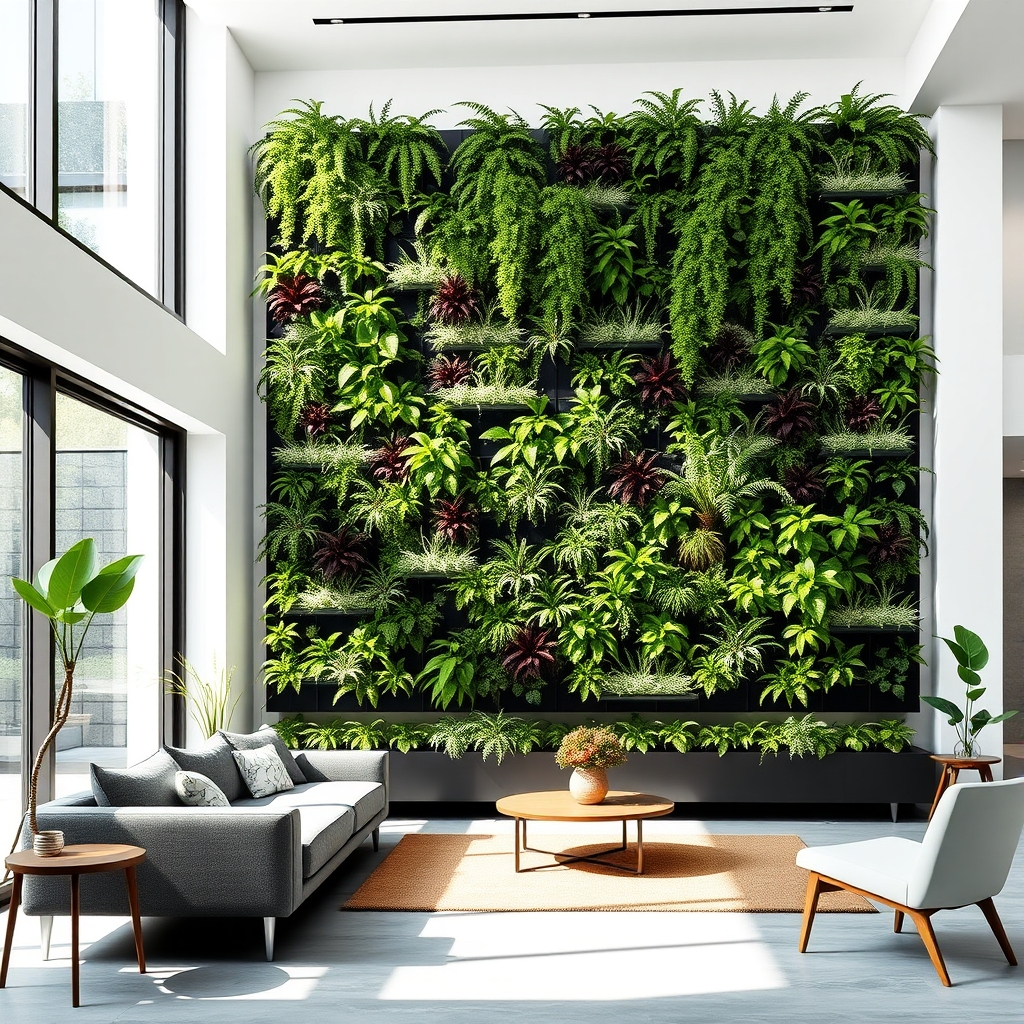
A living wall with vertical gardens transforms indoor spaces by creating a dramatic display of plants growing upward along walls rather than horizontally.
Plants are arranged in modular panels, hanging pockets, or custom-built frames attached directly to the wall surface, allowing multiple layers of greenery to flourish vertically.
These installations can range from small accent panels to floor-to-ceiling botanical displays featuring diverse plant varieties, textures, and colors.
The unique feature of vertical gardens is their space-efficient design, which maximizes plant capacity in limited square footage while serving as a striking architectural element.
Plants commonly used include ferns, succulents, air plants, philodendrons, and other tropical varieties suited for indoor growing conditions.
Style Window Sills With Sun-Loving Plants
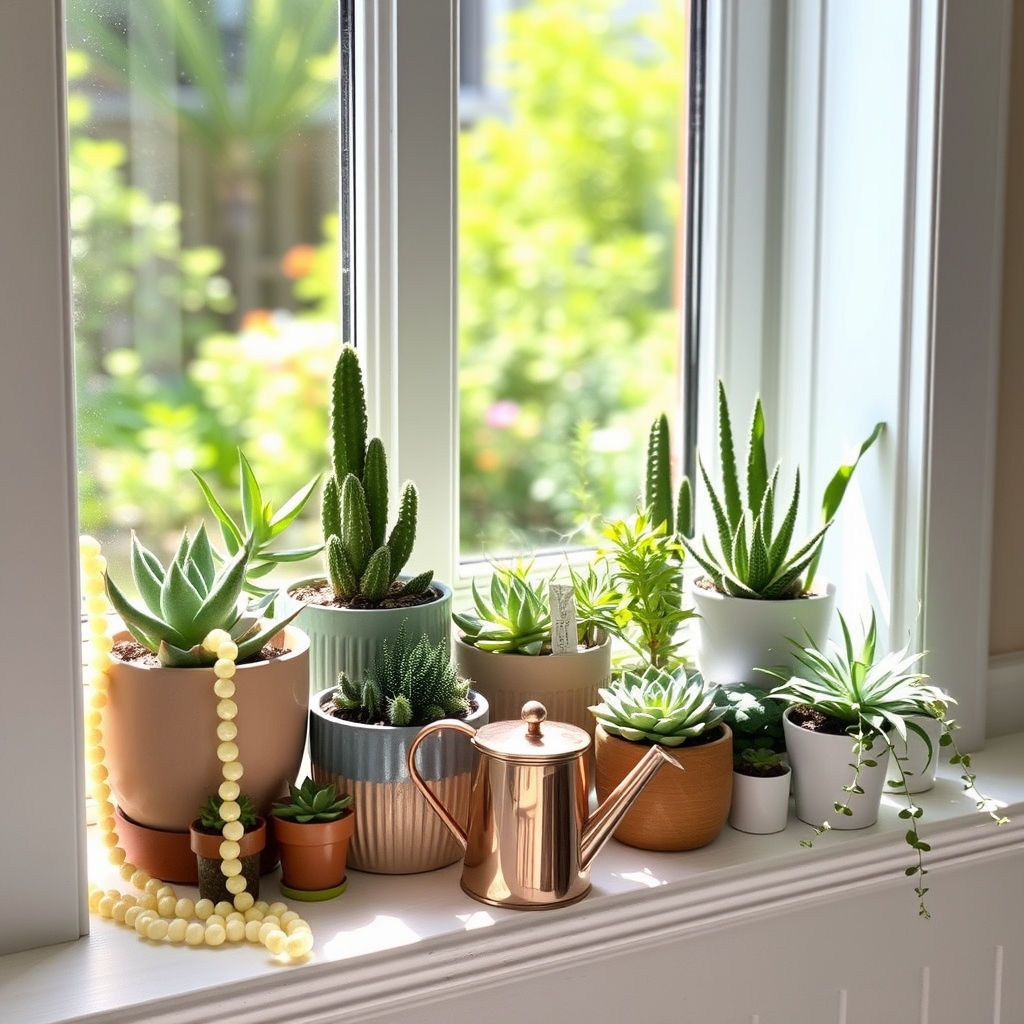
Sun-loving plants arranged along window sills create a natural, living display that maximizes available natural light. Small succulents, cacti, herbs, and compact flowering plants like African violets thrive in these bright spots while adding visual interest at eye level.
Window sill styling typically involves placing plants in decorative containers of varying heights and sizes, creating an aesthetically pleasing arrangement that follows the horizontal line of the sill. This placement not only beautifies the interior space but also makes efficient use of limited growing areas in homes and apartments.
Strategic grouping of plants based on similar light and water needs ensures they flourish in these sun-exposed locations.
Design Plant-Focused Room Dividers

Plant-focused room dividers combine the functionality of space separation with the beauty of indoor greenery.
These dividers typically consist of open shelving units, ladder-style structures, or custom-built frameworks that display multiple plants at varying heights. Plants can be arranged on multiple tiers, creating natural privacy screens while maintaining an open, airy feel.
Common designs include:
- Freestanding metal or wooden frames with integrated planters
- Macramé hanging dividers with potted plants
- Vertical garden walls with built-in irrigation systems
- Modular shelf units specifically designed for plant display
- Glass terrariums mounted on room-height frames
Unique features:
- Allows light penetration while creating distinct zones
- Provides natural air purification
- Creates dynamic, living boundaries that can be adjusted seasonally
- Doubles as a focal point and conversation piece
- Offers flexibility in plant arrangement and spacing
The dividers work especially well with trailing plants like pothos, hanging ferns, or climbing vines that can create cascading green curtains between spaces.
Transform Empty Corners With Statement Plants
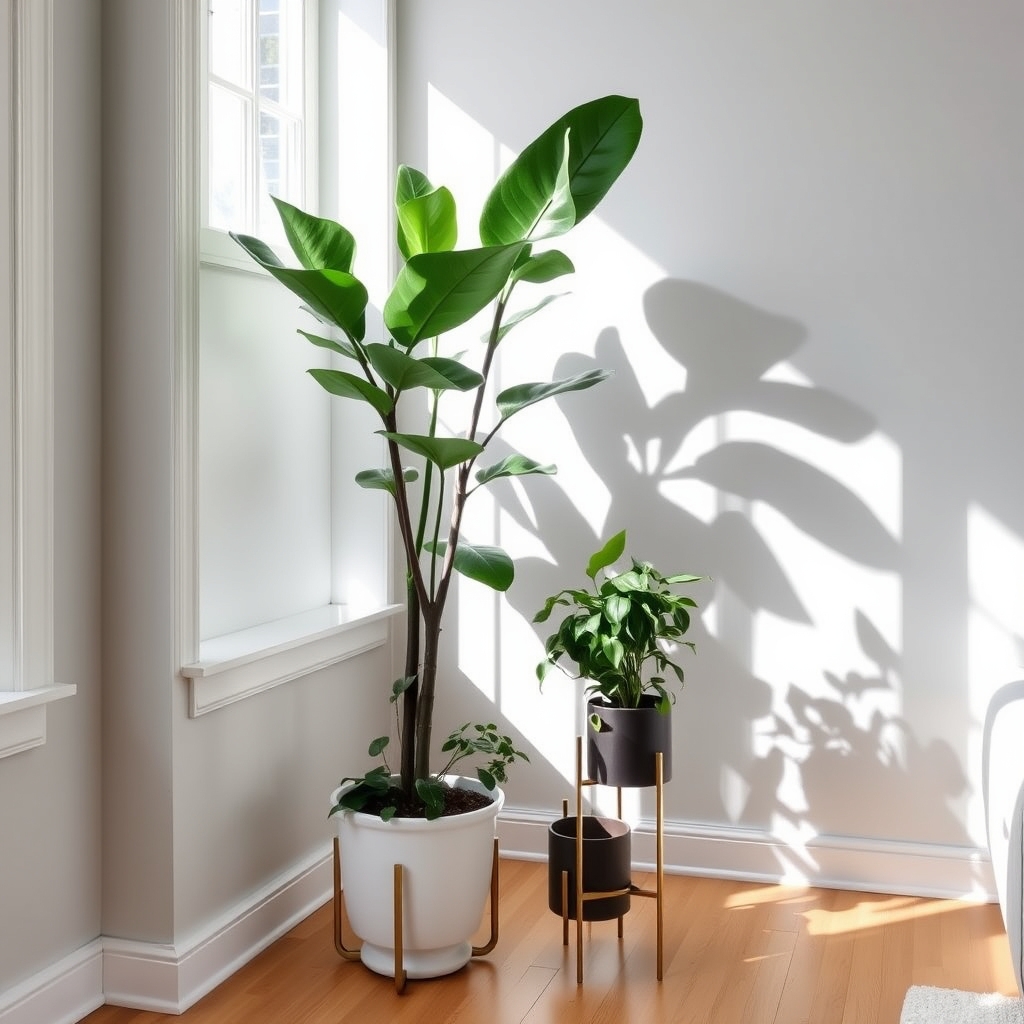
Large, dramatic plants can turn awkward or unused corners into striking focal points. Tall plants like Fiddle Leaf Figs, Bird of Paradise, or Monstera Deliciosa create vertical interest and fill vertical space effectively.
Position these statement plants in decorative planters that complement your room’s style, whether modern, bohemian, or traditional. The natural architecture of these plants draws the eye upward and adds depth to otherwise neglected areas.
Corner-appropriate plants should typically reach heights of 4-6 feet or taller to achieve the desired dramatic effect. Consider layering smaller plants at the base of larger specimens to create a more dynamic corner arrangement.
Arrange Floating Shelves for Small Plant Collections
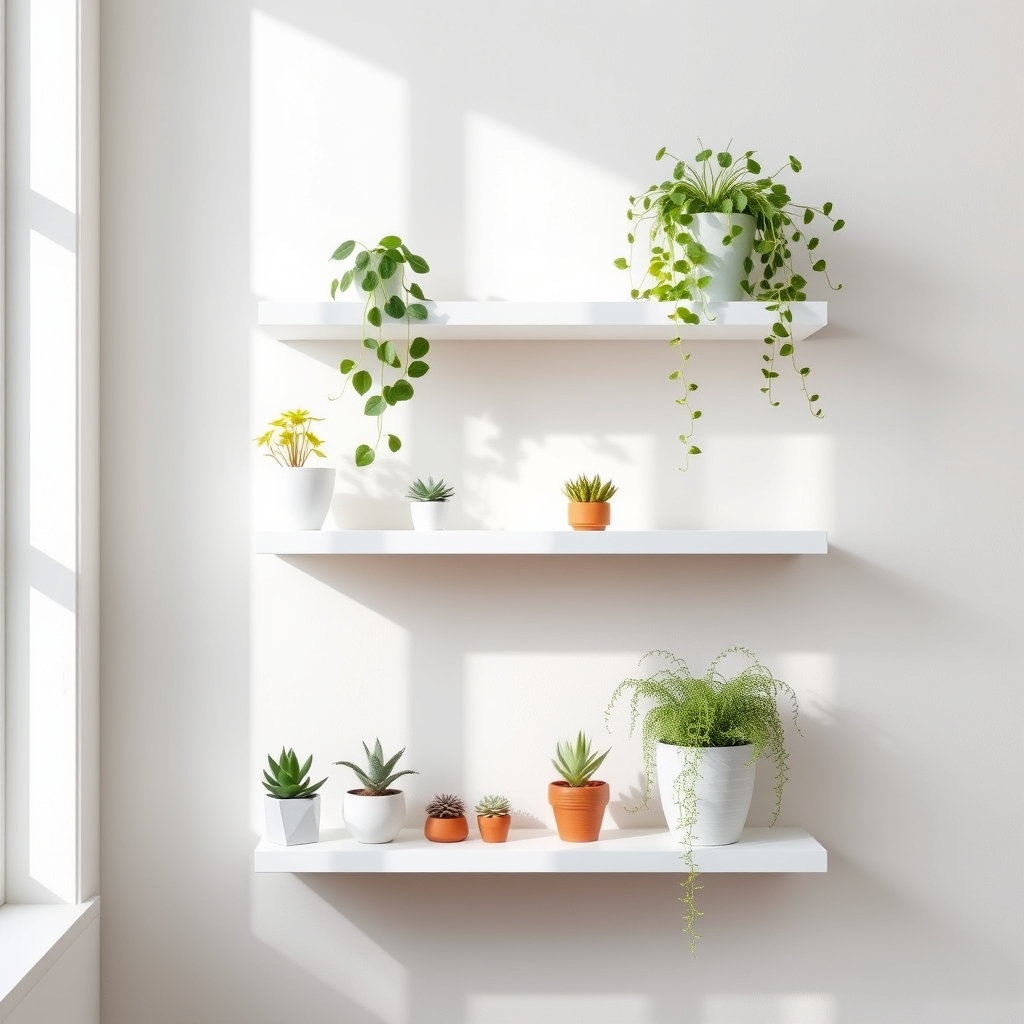
Floating shelves mounted on walls create a striking display for small indoor plant collections while maximizing vertical space.
These sleek, minimalist shelves appear to “float” against the wall without visible brackets, offering a clean, modern aesthetic. Plants can be arranged at varying heights and depths, creating visual interest through layering.
Small potted specimens like succulents, air plants, trailing varieties, and compact ferns work particularly well on these shelves. The arrangement allows for easy adjustment and rotation of plants based on their light needs and growth patterns.
Strategic placement near windows provides necessary natural light while keeping plants safely elevated away from children and pets.
Set Up a Kitchen Herb Garden Display

A kitchen herb garden display combines functionality and aesthetics by arranging edible herbs in attractive containers on windowsills, countertops, or hanging planters.
Small pots filled with herbs like basil, thyme, mint, and rosemary create a living green arrangement that’s both decorative and practical for cooking. The display typically features herbs at different heights, using coordinated containers or terra cotta pots, and may incorporate plant labels or decorative markers.
Fresh herbs add vibrant colors and pleasant aromas to the kitchen space while remaining within easy reach for culinary use. This setup often includes proper drainage systems and can be enhanced with grow lights for areas with limited natural sunlight.
Build a Bathroom Jungle Oasis
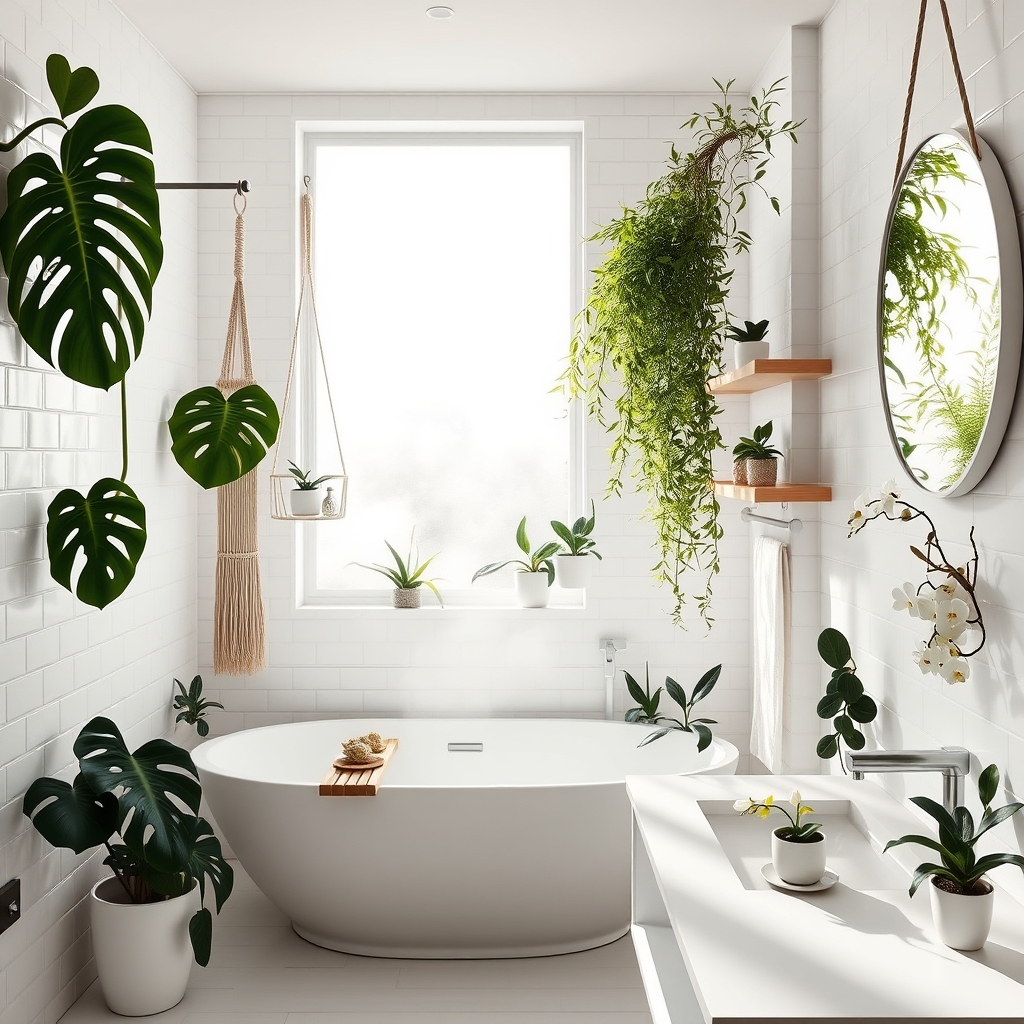
A bathroom jungle oasis transforms an ordinary bathroom into a lush, spa-like retreat by incorporating multiple layers of tropical and moisture-loving plants.
The setup typically features hanging plants cascading from ceiling hooks or shower rods, tall floor plants in corners, and smaller specimens on windowsills or counter spaces.
Plants like ferns, peace lilies, and orchids thrive in the humid environment, while bamboo or monstera plants add dramatic height and structure.
The combination of greenery at different levels creates a cocoon-like atmosphere, with plants benefiting from the natural humidity from showers and baths.
Strategic placement ensures plants don’t interfere with daily routines while maximizing the calming, natural aesthetic of the space.
Craft Stunning Plant-Based Centerpieces
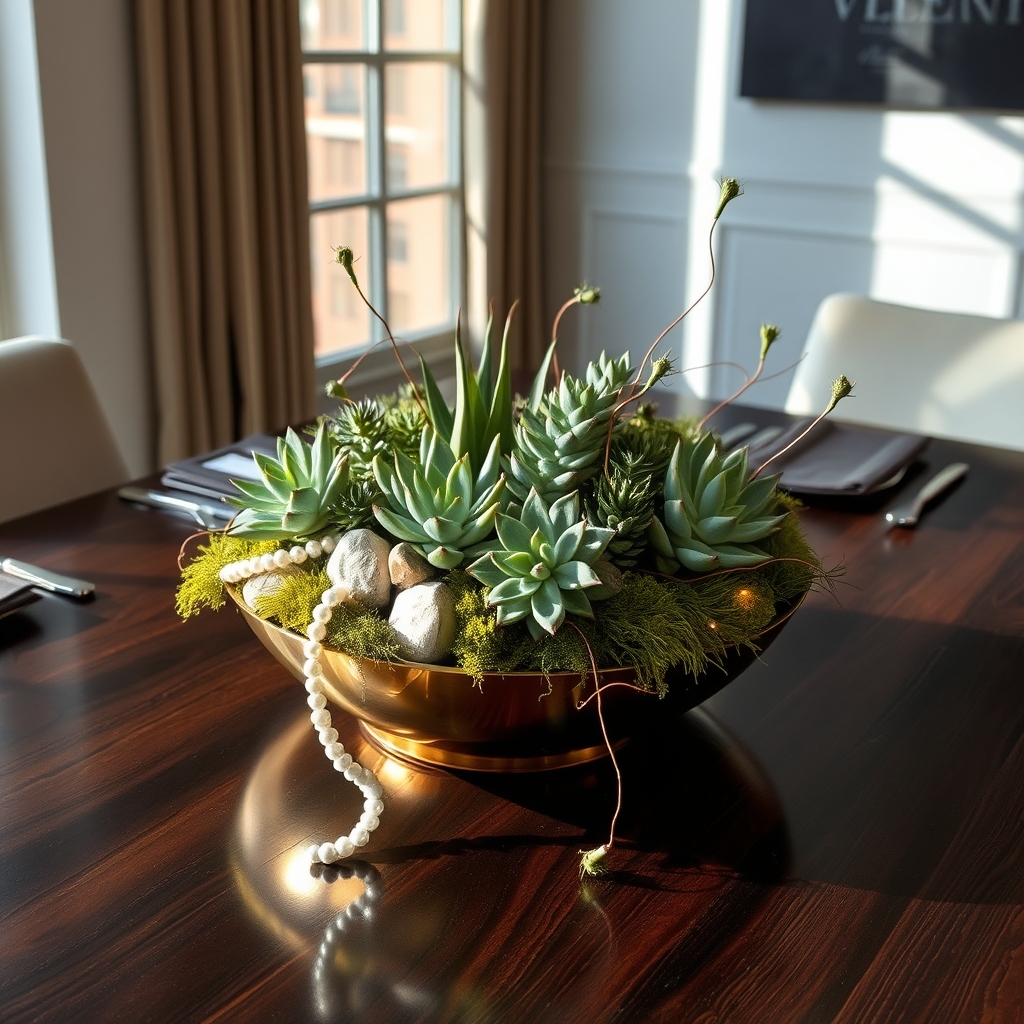
Plant-based centerpieces transform indoor spaces by combining live plants with decorative elements to create eye-catching focal points.
These arrangements typically feature a mix of heights, textures, and colors, using items like succulents, air plants, flowering specimens, or trailing vines arranged in stylish containers.
Unique features include layered designs with moss, stones, or decorative sand, plus optional accents like branches, LED lights, or seasonal elements.
Centerpieces can be designed for dining tables, coffee tables, or mantels, offering both natural beauty and conversation-starting appeal while maintaining a cohesive look with the room’s existing décor.
Hang Trailing Plants From Ceiling Features
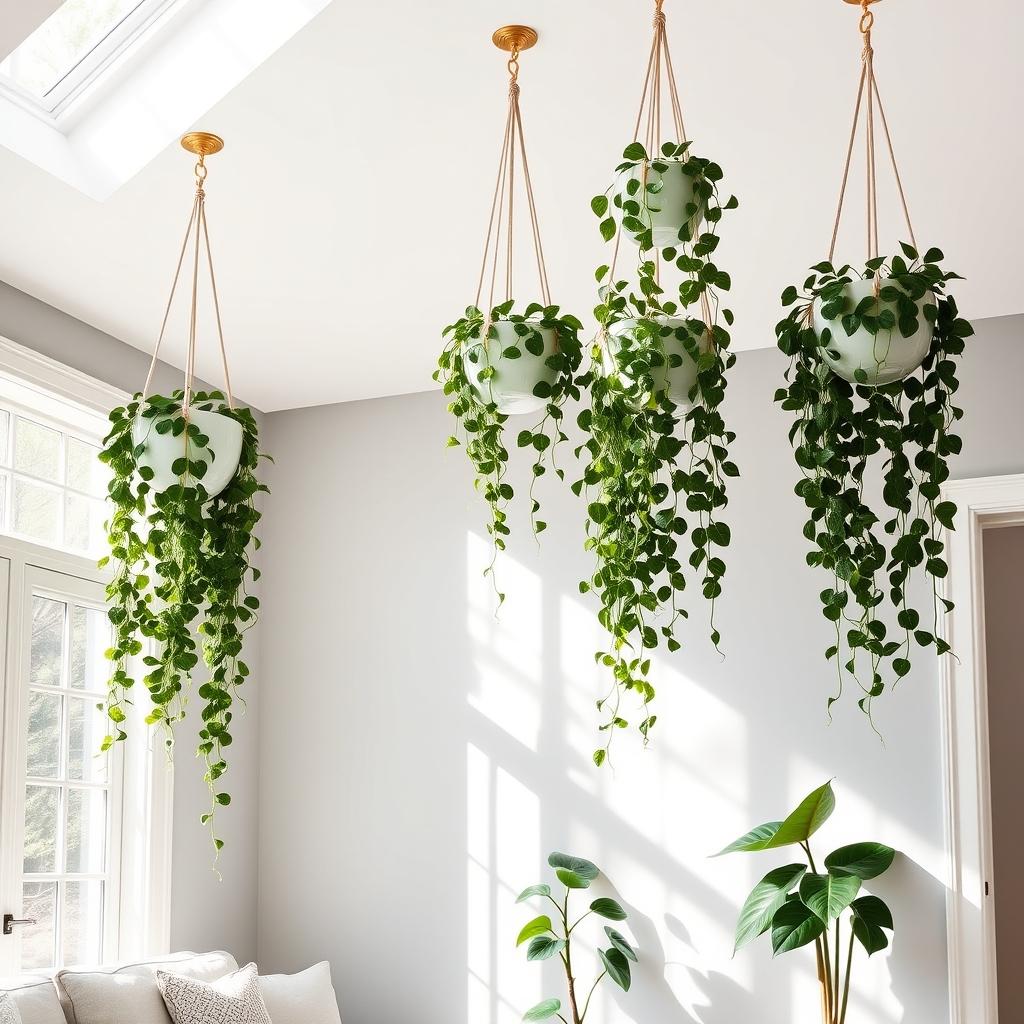
Hanging trailing plants from ceiling features creates a dramatic cascading effect that adds natural beauty and vertical interest to any room.
These suspended plants flow downward with vining stems and leaves, forming living curtains or organic sculptures in the air. Common mounting points include exposed beams, decorative hooks, macramé hangers, or suspended rods.
Plants like pothos, string of pearls, Boston fern, or English ivy work particularly well for this application, as their naturally trailing growth habits create length and movement.
The dangling greenery can span several feet in length, making them ideal for high ceilings or stairwells. This arrangement also maximizes floor space while drawing the eye upward and softening architectural elements.
The key features include:
- Creates a lush, overhead garden effect
- Adds dimension and movement to empty ceiling areas
- Allows plants to grow naturally downward
- Provides visual interest at different heights
- Works well in corners or over furniture groupings
- Requires minimal floor or surface space
